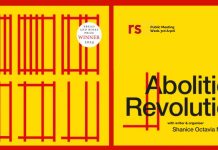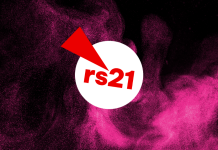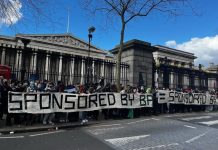Pat Stack reviews Struggle or Starve: Working-Class Unity in Belfast’s 1932 Outdoor Relief Riots by Seán Mitchell, arguing that this look into Northern Ireland’s forgotten past has much to teach activists looking to build anti-sectarian working-class movements today. Struggle or Starve is published by Haymarket Books and available now at a reduced price through rs21.

With the years of armed conflict behind it, with the drama of the Good Friday agreement put to bed, with the ‘Peace Process’ firmly in place, Northern Ireland had probably slipped from the memory of many, and for younger people hardly crossed their political radar at all.
Then we all suddenly find a totally discredited Prime Minister and her loathed and ridiculed colleagues kept in power by an apparently bizarre party of anti-abortion, gay-hating, dinosaur-denying weirdos.
Many joke about this apparent weirdness, but in amongst the reaction and flat-earthism lurks the main fact about this party: that they were founded on, grew on, and continue to prosper on the back of a deep anti-Catholic bigotry. They represent a wistful look back to the days when Unionists ran the show in Northern Ireland on their own, and practiced wide scale discrimination, electoral fraud and repression.
That they were allowed to do so was largely down to the acquiescence and support of successive British Governments. Eventually, however, it became clear that due to huge resistance — both through a popular civil rights movement and then an armed struggle that had deep roots of support in the Nationalist Community — things could no longer go on in the old way.
The Democratic Unionist Party (DUP) represented the last hurrah of Unionism’s attempt to preserve or restore what had gone before (political dinosaurs one might say), splitting from mainstream Unionism for going soft and betraying everything that was sacred to their Loyalist heritage. But even dinosaur-deniers can’t always deny the present, and when it became clear that past was gone for good, they leapfrogged over their ‘moderate’ opponents to get their noses very firmly in the ministerial trough.
They did so within a political process designed not to end sectarianism, but rather to both solidify and contain it. The Good Friday Agreement was not one that swept away the religious divide. Instead, it established it in the political structures every bit as solidly as the ‘peace walls’ it was building to ‘keep the tribes apart’.
The problem, you see, is the tribes. That has been the British message from the creation of the Northern Ireland State through the period of the ‘troubles’ into the fabric of ‘Good Friday’ right down to today.
This view skilfully avoids any notion that the British and Northern Irish establishments carefully nurtured and encouraged such divisions, and suggests that all you can do is manage the hatred — because, like the poor, the hatred will ‘always be with us’.
What has any of this got to do with Seán Mitchell’s book? Well, I would argue a hell of a lot. It would be easy to review this book by saying the author has delivered a lively, entertaining, informative and beautifully written account of a little talked about moment in Northern Irish working class history.
Not only would it be easy, it would be true: Mitchell’s book is all of the above. But it is also so much more than that. It provides an incredible glimpse into how things might have been different and a hand book into how they might be different again.
The Outdoor Relief struggle was one born out of a particularly harsh, dogmatic, and heartless version of laissez faire capitalism even for its time.
The way the Northern Irish state dealt with unemployment relief was to force people either into hated workhouses where families were separated and forced to live in nightmarish and utterly humiliating conditions, or to do onerous pieces of work on pitiful token wages. The latter was known as Outdoor Relief.
The ruling class of Northern Ireland had felt supremely confident in their parsimony, given their very careful construction of divide-and-rule within the state. From the founding of the state, they sought to show that they had the back of the Protestant working class. The first Prime Minister, James Craig, (later made a Lord of course) stated that he was constructing a Protestant parliament within a Protestant state for Protestant people. His successor, Basil Brooke (later knighted of course), encouraged Protestant employers not to employ Catholics in their factories, on their farms or as servants in their homes.
Indeed, some of the major employers of skilled workers in the shipyards and large factories had witnessed riots which drove all Catholics and ‘rotten Protestants’ (i.e. those who refused to bend the knee to sectarianism) from the workplace.
However, as the deep crisis following the Wall St Crash of 1929 chewed its way into the Northern Irish economy, the myth of a shared cross class interest became exposed and fragile.
Unemployment soared to a figure that in real terms reached 40 per cent. This could not be confined to the Nationalist (Catholic) population, but soon began biting harshly in to the Protestant workforce. This exposed the class nature of Unionism, showing that Protestant workers were of secondary importance to the interests of capital, profit, and free market economics.
Believing the sectarianism they had so carefully nurtured would keep the class divided and the Protestant section of it loyal, the government were complacent in their contempt.
The first signs of organised resistance in Belfast would have hardly frightened them. Meetings were called by the small Revolutionary Workers Groups, the embryonic version of what was to become the Irish Communist Party. One of their leading Belfast activists, Tommy Geehan, a former IRA member, became the figurehead and key organiser of that resistance, forming the Outdoor Relief Workers Committee.
Geehan’s republican background in no way blinded him to the need for the movement to draw in workers from either side of the sectarian divide. With some rapidity, the movement grew in Catholic West and Protestant East Belfast. In particular, the movement gathered real support in the two areas that probably most graphically epitomised the sectarian divide: the Catholic Falls Road area and the adjacent Protestant Shankill Road.
Geehan and his comrades began organising rallies which quickly grew in size and militancy, and placed demands on the Board of Guardians who administered relief in a cruel and condescending manner, viewing those who claimed it as feckless and lazy and seeing their own role as primarily defending the public purse, rather than assisting those in dire need.
By October, the size and confidence of the movement led them to call a strike by Outdoor Relief workers in the city. Over 2000 workers downed tools and placed their demands to the trustees. In the process, they built huge levels of support and solidarity, with large rallies and marches taking place.
Concessions were offered by the state and rejected by an increasingly confident movement.
Little surprise that in their increasing desperation the government and establishment media played the sectarian card. Attempting to depict the movement as a communist/republican struggle based in the Nationalist community, they claimed that its real purpose was to destroy the northern state and unite Ireland.
The Ulster Protestant League, a sort of forerunner of the DUP, attacked marches, arguing for Protestants to protect their own interests as opposed to those of Catholic workers.
When a huge march was banned, the struggle exploded into a series of riots. Even here the state sought to divide and rule. The RUC (the Royal Ulster Constabulary — cops) was instructed to only use batons in the Protestant Shankill, but that live bullets should be used in the Falls.
A lull in the fighting in Shankill coincided with a huge police assault on the Falls. But when word reached the Shankill, the area exploded in violent resistance in solidarity with the Falls.
In the light of such militant class unity, the government were forced to back down, and this time, although not all demands were met, major concessions were given and were accepted. The movement had won a great victory.
In the process, it had crucially shown that the key divide was class and not ‘tribe’, that unity could be forged, and crucially only with that unity could working class Catholics and Protestants truly advance their interests.
Sadly, within three years the same economic desperation led to a return of the old divides, and now the riots took the form of pogroms and sectarian violence. While the movement had shown the potential for unity and its communist leaders had been clear from the start that they wanted to build a across the divide, this didn’t last greatly beyond the struggle.
In studying why, Seán Mitchell looks at the question of spontaneity and conscious political input. In the right circumstances and with a committed non-sectarian leadership, the movement had shown what was possible. But for the lessons to be fully learnt and long lasting, a political leadership that not only overcame sectarianism within the context of a particular struggle, but that openly fought it in all its manifestations was necessary.
Great as it was that the movement had spontaneously united, there was also a need for longer term political agitation against sectarianism, with people arguing within the movement how it provided the ruling class with a weapon to defend their interests at the expense of workers, and that Protestant workers had no common interest with those rulers.
You could slide past the question in the heat of the struggle, but to have long lasting effect open political propaganda and agitation around the question was needed. Deep-rooted sectarianism was not going to simply go away on the back of one victory, but that victory could have provided a great spring board to building a militant non-sectarian movement.
Mitchell looks at why this didn’t occur. Of course, one has to recognise the Communists were a tiny minority, so the battle was not going to be easy; however, he also shows that the role of official Communist (Stalinist) policy at the time, during a period of popular front liquidation, led the excellent activists on the ground to miss such opportunities and underestimate challenges.
There have been few studies of this fascinating series of events, and those that do exist either play down its significance or write off the unity forged as an aberration.
Mitchell does neither. He recaptures the events with clarity, and tells a great story. Crucially, he not only recognises the historic importance of the struggle, but also shows its relevance to the way forward in Northern Ireland today. He shows that there is an alternative to processes that enshrine divides, to peace walls, and to the sectarian backwater of the DUP-led Northern Irish State.
He also shows that the alternative needs the conscious input of revolutionaries who make no concessions to sectarianism as they strive to achieve an ongoing class unity that can consign all talk of ‘tribes’ to the dustbin of history.
Pat Stack

Struggle or Starve: Working-Class Unity in Belfast’s 1932 Outdoor Relief Riots
Seán Mitchell
Haymarket Books
£14.99 RRP or £12 through rs21 (including P&P)


















